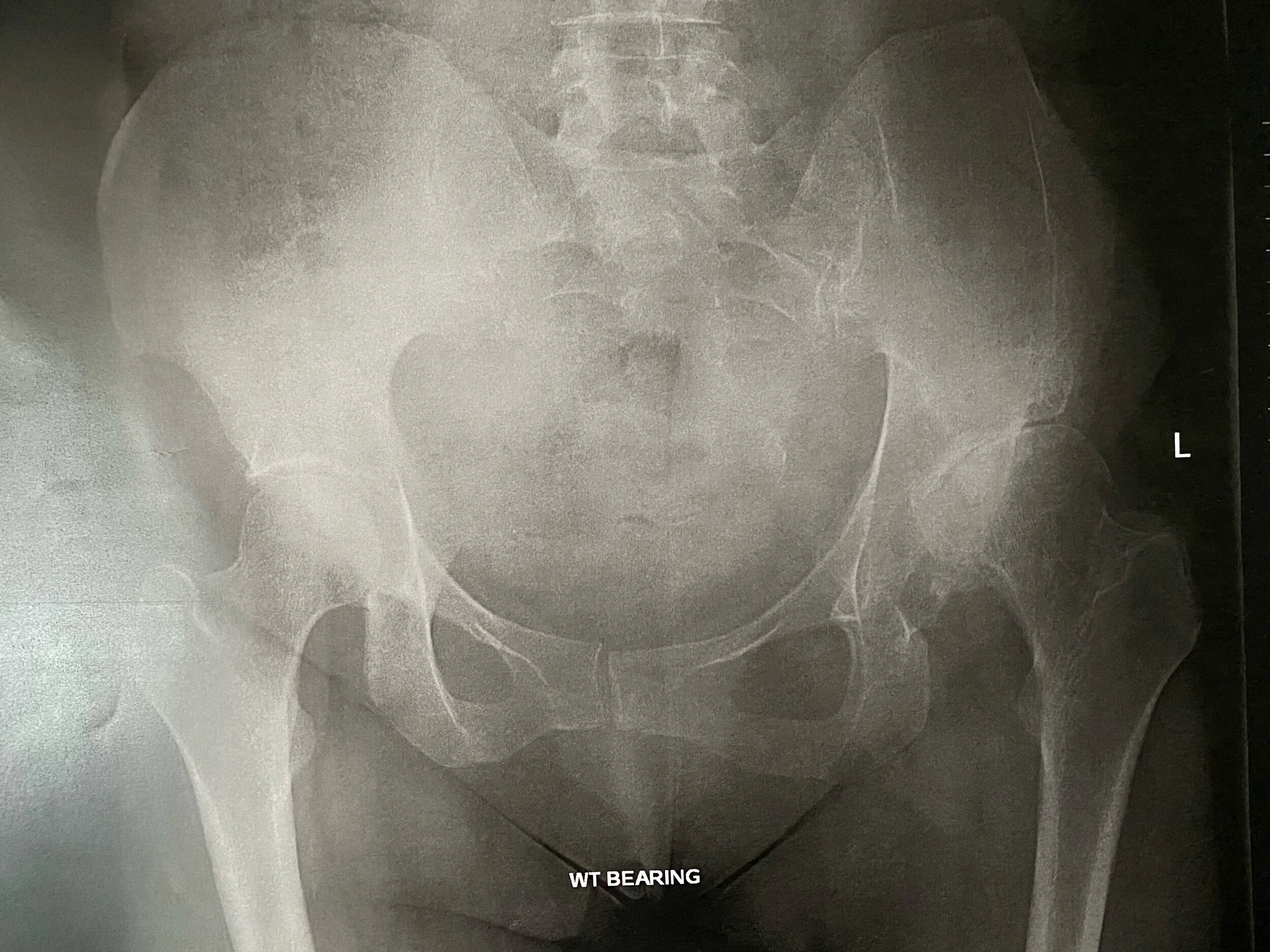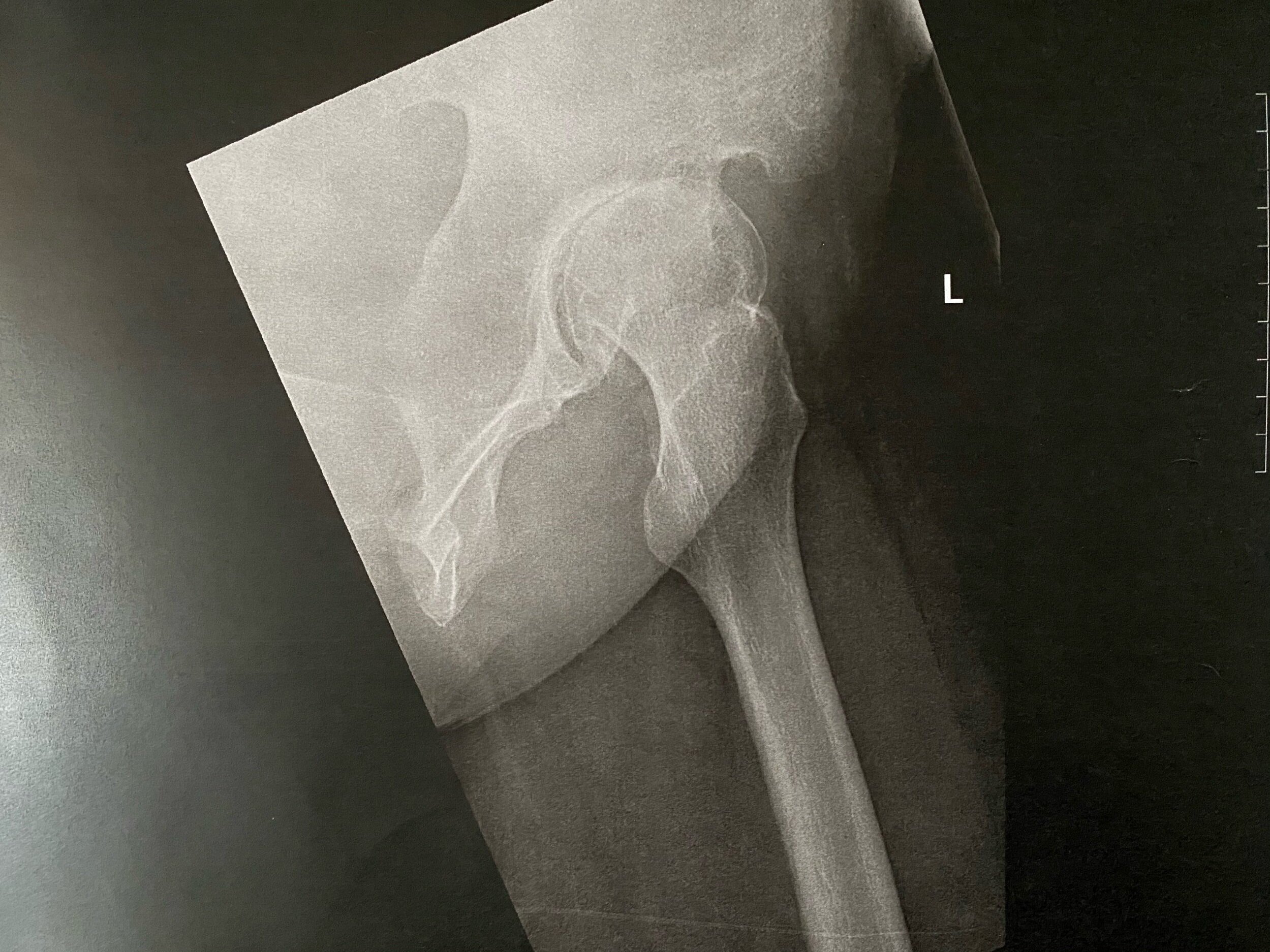Advanced Osteoarthritis Protocol & Hip Replacement Pre-Hab
My path towards osteoarthritis and hip replacement surgery
This is a personal story today, based on my experience with congenital hip dysplasia, arthritis and my path towards a total hip replacement.
When I was born (in the 80’s in England), all of the usual checks were done and everything was deemed normal before I was sent home from hospital with my family. My Mum says that she mentioned many times over the next 15 months to health professionals that my left leg was turned in a strange way but she was repeatedly told that everything was fine, my hips weren’t “clicky” and it was nothing to worry about.
When I started to walk at 15 months old, finally they had to listen. I was diagnosed with congenital hip dysplasia that required corrective surgery due to being “missed” during the routine checks. My hip was so far out of the socket that it didn’t click (this was also the case with my niece and nephew, but luckily because of my history, all of our kids are given hip ultrasounds at 6 weeks old and theirs was corrected quickly and without surgery).
At 18 months old I had surgery and was in various harnesses, plasters and braces for a long time after that. I still remember wheeling around on my back using the board my dad made me covered in pink carpet and on casters.
Fast forward to my teens and I would often jump to my feet in the middle of class because I felt like my hip was about to pop out and I was in quite a bit of pain. This lead to another surgery where I was given a bone graft to improve the structure of my hip socket and keep things in place. After this surgery I was in traction for 5 days (similar to that first image above) and on crutches for 3 months. I had for some reason expected this surgery to give me completely normal usage of my hip and at a follow up with a orthopaedic doctor I was basically told to suck it up and that this surgery meant that instead of needing a hip replacement at 25, I now wouldn’t need one until I was 45. So, I sucked it up.
Thankfully, along the way I found myself working in a profession where I would work alongside some amazing physiotherapists, chiropractors, acupuncturists, osteopaths, massage therapists and naturopaths. And I learnt that you don’t need to suck it up, there’s actually a lot you can do to improve the pain and mobility of these joints and to minimise the discomfort of osteoarthritis.
I am now 38 (I didn’t make it to the predicted 45), and am scheduled for a total hip replacement in a couple of months. It took me a while to come to terms with the fact that it was time to speak to a surgeon. My osteopath (and colleague, David from Dural Osteopaths) had mentioned it quite frequently, as he knew from years of treating me that my hip was rapidly declining, he was met with denial and refusal. My physio friend saw me walking late last year and was quite insistent that if I didn’t sort my hip out soon, other areas of my body would pay the price (she was spot on, my right knee has become quite dodgy). And eventually I had to “suck it up” once again and commence the path to surgery.
When I took the x-rays above to the surgeon and he assessed me, he told me it was end stage arthritis and that I was definitely a candidate for a total hip replacement. They would be able to operate the following month. I told him I wasn’t ready to book it in yet, which he said was fine but he said “you must be in a lot of pain, I’m sure you won’t want to leave it too long”. And the thing is, I am but I’m not. I have this amazing protocol that keeps me in a pretty manageable state of discomfort, and I know that without this protocol, I would either be in an unbearable amount of pain right now, or I would’ve had the surgery already. I know this because when I stop following my protocol I start to suffer pretty quickly.
My Osteoarthritis protocol
Being a naturopath, I am very lucky to have access to the best practitioner grade supplements and the most up to date research and knowledge when it comes to osteoarthritis treatment. I have treated osteoarthritis in my clients and I have done quite a bit of trial and error on myself. I am not going to give you a one sized fits all regime for arthritis because it doesn’t exist. Naturopaths look at each person as unique and each treatment protocol is also unique, and tapered to that individual. What I am sharing with you here are the herbs and nutrients that have had the most impact for me. I don’t routinely take any prescription pain killers or anti-inflammatories (not that i’m against it if required), and I can count on 1 hand the number of times I’ve taken ibuprofen or paracetamol for hip pain in the past 12 months. This protocol varies to a standard osteoarthritis treatment where we would be working to nourish the joint and help it last longer. I will share one of these with you after my surgery, when I’m working on building my knee back up to prevent further damage. What i’m sharing today is more acute care to keep pain and inflammation manageable in end-stage arthritis (where there’s not much in the way of cartilage left in the joint).
Palmitoylethanolamide (PEA)
PEA is a game changer for chronic pain and inflammation. I started on a dose of 1200mg daily (taken as 4 x 300mg doses) and now hover between 2-3 doses a day depending on my pain levels and compliance. This isn’t something you take acutely, expecting pain to disappear after one dose. Rather, PEA needs to be taken for 8-12 weeks before most people notice a significant improvement. But once the improvements kick in, they are noticeable. PEA is generally quite safe to use and is safe alongside most other supplements and medications.
Curcumin
Curcumin is derived from turmeric and is well known as an anti-inflammatory and analgesic herb for arthritis treatment. I am taking a high dose of curcumin, far greater than you would likely get by including turmeric in your daily diet (it would equate to over 20g of turmeric root daily). I have tried a number of different curcumin extracts from different suppliers and have settled on one that I find most effective, with a backup option if my first choice goes out of stock. Curcumin can interfere with the action of a number of pharmaceutical drugs so you definitely want to seek advice from your healthcare provider before starting this herb.
Boswellia serrata, Piscidia piscipula & Harpagophytum procumbens
You probably know Boswellia by its common name, frankincense. Boswellia has be proven to reduce pain and improve joint function in osteoarthritis patients. It’s an anti-inflammatory, anti-arthritic and analgesic herb. Piscidia (Jamaican dogwood) and Harpagophytum (Devils claw) are also used for their analgesic and anti-inflammatory properties, reducing or eliminating the need for non-steroidal anti-inflammatory drugs and pain killers. These herbs can interact with pharmaceutical medications so practitioner advice and prescription is recommended.
Physiotherapy
As I mentioned earlier, I have worked with a range of fantastic practitioners over the years. The first treatment I received was from a physiotherapist called Sue Brown and she completely changed the way I walked, and it felt like she untwisted my spine. The other physio, who helped me to learn how to walk up stairs in a way that protected my knees and helped to work on my leg length difference was Peta Gosbee. Peta is a friend of mine and also recommended the surgeon I have chosen to perform my hip replacement. These physio’s helped me to gain confidence in my body and take control of my situation. I will be using physio again for pre-hab and rehab around the surgery and have been given some exercises to do at home.
Osteopathy
My hip has never felt as good as it has since I started working at Dural Osteopaths. I am certain that David has kept me moving well and helped to delay my need for a hip replacement. I am currently having osteopathic treatments with David every 3 weeks. I have found that this is the magic number to keep me moving without too much stiffness. David not only works on my hips/pelvis/lower back but also work on releasing my ribs, upper back and neck. It amazes me every time I see him how much more movement I get in my hips after he has adjusted my ribs. Mind blowing!
Remedial Massage
As a remedial massage therapist myself, I obviously value and recognise the benefits of regular massage. At the moment I get a massage approximately every 4 weeks and if I manage to time it within the week before my osteopathy appointment I find both treatments even more effective. My massage therapist Louisa Lin has a similar treatment style to my own and she successfully releases my tight muscles while relaxing me to a state of zen that usually results in me waking myself up with a snort! I also had a treatment with Elizabeth from Natural Tranquility recently when my sacrum was aching constantly. Liz was fantastic and relieved me of my pain in just one 30minute session.
Total Hip Replacement
The above protocol has been fantastic for keeping me moving, able to run (sometimes hobble) around after my four year old, and working over the past year while my hip has been rapidly declining. It’s not a long term solution though and I have come to accept that a new hip should help me gain back more quality of life. With two months until my hip replacement, I am now about to commence my pre-hab protocol which will include all of the above, plus an anti-inflammatory diet and some exercises to improve my recovery outcomes.
I wanted to share this information with you so that if you’re struggling with advanced osteoarthritis, you can see that there is a lot you can do to improve your symptoms and keep yourself relatively pain free. I definitely recommend seeking the guidance of a naturopath for the herbal and nutritional side of things, getting the right quality and right dosages is vital to right outcome. If you have any questions, please feel free to get in touch.
Laura





